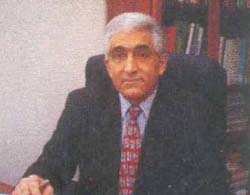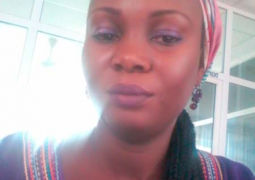
Truth: Cancer is not just a health issue, it has wide-reaching social, economic, development, and human rights implications.
Report from World Health Organization (WHO) against Cancer revealed that Cancer is a leading cause of death worldwide and accounted for 7.6 million deaths (around 13% of all deaths) in 2008.
Each year on 4th February, World Health Organization (WHO) supports International Union against Cancer to promote ways to ease the global burden of cancer. Preventing cancer and raising quality of life for cancer patients are recurring themes.
Dr Azadeh, our health adviser, a senior lecturer at the Medical School of the UTG and a senior Consultant in Obstetrics & Gynaecology will this week highlight the importance of World Cancer Day Awareness and focus on most common cancers.
The Point: What is Cancer?
Cancer is a broad term used to encompass several malignant diseases. There are over 100 different types of cancer, affecting various parts of the body. Each type of cancer is unique with its own causes, symptoms, and methods of treatment. Like with all groups of disease, some types of cancer are more common than others.
How does cancer occur?
The body is made up of trillions of living cells. These cells grow, divide, and die in an orderly fashion. This process is a tightly regulated one that is controlled by the DNA machinery within the cell. When a person is a baby or a child or within his or her mother’s womb, cells divide rapidly to allow for growth. After the person becomes an adult, most cells divide only to replace worn-out or dying cells or to repair injuries.
When cells of the body at a particular site start to grow out of control, they may become cancerous. Cancer cell growth is different from normal cell growth. Instead of dying, cancer cells continue to grow and form new, abnormal cells. In addition, these cells can also invade other tissues. This is a property that normal cells do not possess.
Who gets cancer and how common are cancers?
There are millions of people worldwide who are living with cancer or have had cancer. According to estimates, around half of all American men and one third of all American women will develop cancer during their lifetimes.
A healthy lifestyle with regular physical activity, healthy diet, maintenance of healthy weight and staying away from tobacco, sun exposure and other known cancer causing substances can help reduce the risk of getting cancers.
Some cancers also have effective screening tests. This helps in detection of common cancers as early as possible. Early treatment often means better chances of recovery and response to anti cancer therapy. Common examples of this are breast cancer and colon cancer screening that saves thousands of lives each year.
Types of Cancers
Skin cancer is the most commonly diagnosed cancer among men and women. Over one million cases are diagnosed each year, with more young people having skin cancer than ever before. The most common types of cancer in the United States based on frequency of diagnosis are:
Bladder cancer
Breast cancer
Colon cancer
Endometrial cancer
Kidney cancer (renal cell)
Leukaemia
Lung cancer
Melanoma
Non-Hodgkin lymphoma
Pancreatic cancer
Prostate cancer
Thyroid cancer
World cancer day is held on 4th February
Cancer is a leading cause of death around the world, according to WHO, which estimates that 84 million people will die of cancer between 2005 and 2015 without intervention. Low-income and medium-income countries are harder hit by cancer than the high-resource countries. It is essential to address the world’s growing cancer burden and to work on effective control measures.
World Cancer Day is a global observance that helps raise people’s awareness of cancer and how to prevent, detect or treat it. This event is held worldwide on February 4 each year. World Cancer Day is part of the World Cancer Campaign, which responds to the Charter of Paris adopted at the World Summit Against Cancer for the New Millennium on February 4, 2000. It called for a strong alliance between researchers, health-care professionals, patients, governments, industry partners and the media to fight cancer.
History of world cancer day
The Charter of Paris designated February 4 each year as World Cancer Day. UICC (International Union against Cancer) a global consortium of more than 280 cancer-fighting organizations in over 90 countries, is responsible for coordinating World Cancer Day globally. It receives support from various partners and organizations, including the World Health Organization, the International Atomic Energy Agency, and other international bodies. UICC organized the first World Cancer Day in 2006. Both the organisations work to promote ways to ease the global burden of cancer.
Recurring themes over the years focus on preventing cancer and raising the quality of life for cancer patients. Some countries use World Cancer Day to promote campaigns on various cancer issues, such as breast cancer, lung cancer, skin cancer, and cancer in children. Much focus goes towards awareness and risk reduction.
Events of world cancer day
People, businesses, governments and non-profit organizations work together on World Cancer Day to help the general public learn more about the different types of cancer, how to watch for it, treatments and preventative measures. Various activities and events include television, radio, online and newspaper advertisements and articles that focus on the fight against cancer.
Nationwide campaigns are organised which are targeted at parents to help them minimize the risk of cancer within their families. Breakfasts, luncheons or dinners aimed at raising funds for cancer research or projects that help to fight cancer. Many of these events feature keynote speakers or video presentations. Public information booths featuring information kits, fact sheets, booklets, posters and other items that promote the cancer awareness, prevention, risk reduction, and treatment.
Symbols of world cancer day
There are different symbols that are used to help promote the fight against different types of cancers. For example, the pink ribbon is a global symbol of breast cancer awareness, while the orange ribbon is associated with child cancer awareness. Another example is the daffodil, which the American Cancer Society sees as a symbol of hope that people share for a future where cancer is no longer a life-threatening disease. World Cancer Day also known as World Cancer Awareness Day.
Monday 4 February 2013 – World Cancer Day: Geneva, Switzerland
The Union for International Cancer Control (UICC) and the International Agency for Research on Cancer (IARC) today announced that 1.5 million lives which would be lost to cancer, could be saved per year if decisive measures are taken to achieve the World Health Organization’s (WHO) ‘25 by 25’ target; to reduce premature deaths due to non-communicable diseases (NCDs) by 25% by 2025.
Currently, 7.6 million people die from cancer worldwide every year, out of which, 4 million people die prematurely (aged 30 to 69 years).i So unless urgent action is taken to raise awareness about the disease and to develop practical strategies to address cancer, by 2025, this is projected to increase to an alarming 6 million premature cancer deaths per year.
“The estimate of 1.5 million lives lost per year to cancer that could be prevented must serve to galvanise our efforts in implementing the World Health Organization’s (WHO) ‘25 by 25’ target,” said Dr Christopher Wild, Director of IARC.
“There is now a need for a global commitment to help drive advancements in policy and encourage implementation of comprehensive National Cancer Control Plans. If we are to succeed in this, we have a collective responsibility to support low- and middle-income countries who are tackling a cancer epidemic with insufficient resources.”
The 1.5 million lives lost per year represent 25% of the estimated 6 million premature cancer deaths that will occur by 2025, and the 6 million figures is itself based on population projections of current numbers and aging.
On World Cancer Day, UICC and its members are urging the public and governments alike to speak out with one voice to dispel damaging myths and misconceptions on cancer. Under the theme “Cancer – Did you know?” individuals and communities are encouraged to shed light on four key cancer ‘myths’ and the corresponding ‘truth’ via the UICC World Cancer Day App. Download the App and play your part in reducing the unacceptable burden of cancer.
Please note
Cancer is the uncontrolled growth and spread of cells. It can affect almost any part of the body. The growths often invade surrounding tissue and can metastasize to distant sites. Many cancers can be prevented by avoiding exposure to common risk factors, such as tobacco smoke. In addition, a significant proportion of cancers can be cured, by surgery, radiotherapy or chemotherapy, especially if they are detected early.
Further information available at RVTH, MRC, number of NGOs and private clinics; Also call “THE POINT” Health Section or call on Afri Radio Health TALK, “prevention is better than cure” with Dr Azadeh every Friday from 9-10pm Tel. 1076 or on Dr Azadeh and Peter Gomez live radio Health Show every Tuesday from 6-7pm. You can also send email to Dr Azadeh on azadehhassan@yahoo.co.uk or call on 7774469 week days from 3-pm.


